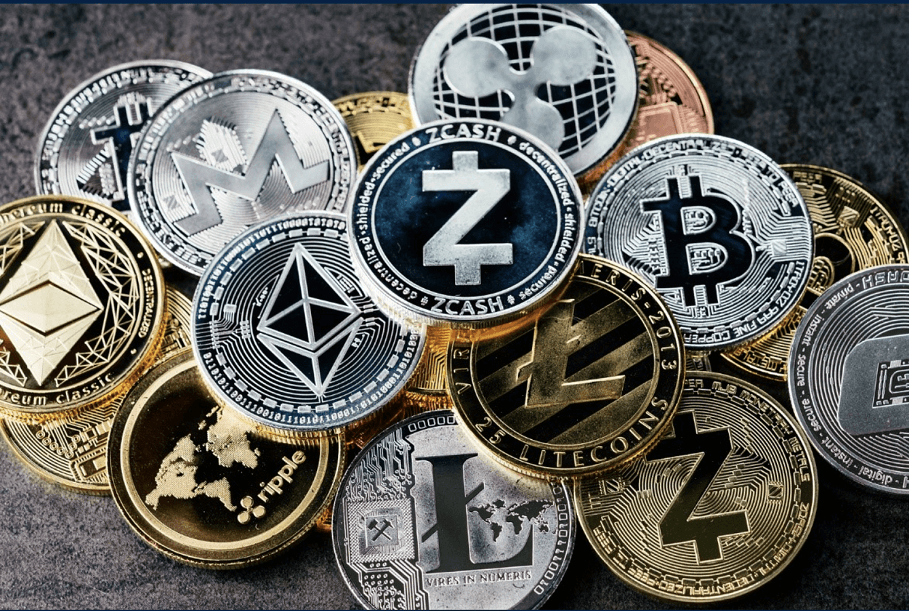What types of cryptocurrencies are there?
Layer 1, Layer2, Defi, Gamefi, NFT, and Metaverse enrich the variety of cryptocurrencies; they are all played essential roles in the Crypto world.
Main types of cryptocurrencies
From the birth of Bitcoin in 2008 to the present, the blockchain industry has developed very rapidly. During these 14 years of development, cryptocurrency types mainly represented by Layer1, Layer2, Defi, Gamefi, NFT, and Metaverse have been formed.

Layer 1
In the blockchain industry, layer 1 is the term used to describe the underlying main blockchain infrastructure; it is the base blockchain. The classic examples of layer 1 are Ethereum and Bitcoin. They are underlying foundations that various layer 2 networks build on. They are the main network within their ecosystem.
Layer 1 protocol can process and finalize transactions on its own blockchain; it has its own native token, which is used to pay for transaction fees.
Besides Bitcoin (BTC) and Ethereum (ETH), the famous cryptocurrencies representing layer 1 are Solona (SOL), Cardano (ADA), Polkadot (DOT), Binance Coin (BNB), and Terra (LUNA), Avalanche (AVAX), Cosmos (ATOM).
Layer 2
Layer 2 means the secondary blockchain protocol built on the top of the existing layer 1 blockchain protocol to solve layer 1 protocol’s transaction speed and scaling difficulties.
For layer 1’s transaction speed and scaling difficulties, for example, Bitcoin and Ethereum are still not able to process thousands of transactions per second (TPS), and this is harmful to their long-term growth. Moreover, Ethereum’s transaction speed is pretty high; this will prevent many basic users from using Ethereum. Therefore, the Layer 2 solution is used to solve these main problems.
The two prominent examples of layer 2 solution is Polygon (MATIC) and Bitcoin Lightning Network. Besides these, the well-known cryptocurrencies representing Layer 2 are ChainLink (Link), OMG Network (OMG), Loopering (LRC), Bancor (BNT), OX (ZRX).
Defi
By utilizing smart contracts on a blockchain, Defi offers financial instruments without relying on intermediaries such as banks, brokerages, institutions, and exchanges to resolve the disadvantages of centralized finance.
Defi platforms enable users to lend or borrow funds from others, and allow users to speculate on price movements on assets using derivatives. Users can also trade cryptocurrencies, insure against risks, and earn interest in savings-like accounts on the Defi platform.
The popular defi cryptocurrencies have Terra (LUNA), Avalanche (AVAX), Wrapped Bitcoin (WBTC), Uniswap (UNI), Chainlink (LINK), Dai (DAI), Theta Network (THETA), Fantom (FTM), THORChain (RUNE), Tezos (XTZ).
Gamefi
Gamefi means the play-to-earn blockchain games which provide economic incentives to players.
The representative project of gamefi is Axie Infinity. Other play-to-earn model gamefi cryptocurrencies include The Sandbox (SAND), Decentraland (MANA), WAX (WAXP), Gala (GALA), Illuvium (ILV), Yield Guild Games (YGG).
NFT
A non-fungible token (NFT) is a non-interchangeable unit of data stored on a blockchain. It is a form of digital ledger that can be sold and traded. Types of NFT data units have digital files such as photos, videos, and audio. Because each token is uniquely identifiable, NFTs differ from most fungible cryptocurrencies like Bitcoin.
The popular NFT-related cryptocurrencies are Decentraland (MANA), ApeCoin (APE), The Sandbox (SAND), Theta Network (THETA), Axie Infinity (AXS), Tezos (XTZ), and Flow (FLOW).
Metaverse
Since Facebook changed its name to Meta, it has wholly detonated the Metaverse concept of cryptocurrencies. A metaverse is a network of 3D virtual worlds focused on social connection.
The metaverse related cryptocurrencies include Decentraland (MANA), The Sandbox (SAND), Theta Network (THETA), Stacks (STX), Enjin Coin (ENJ), Render Token (RNDR), Ontology (ONT).






